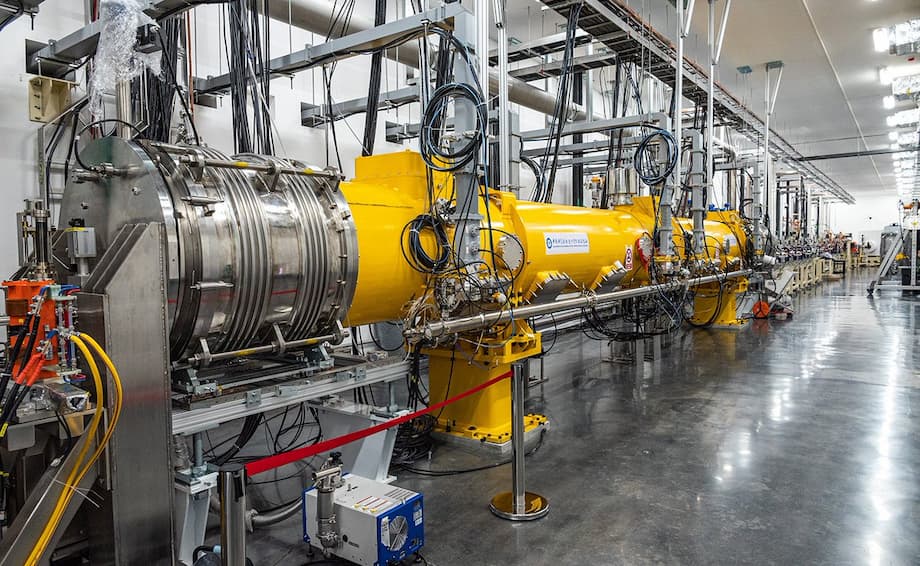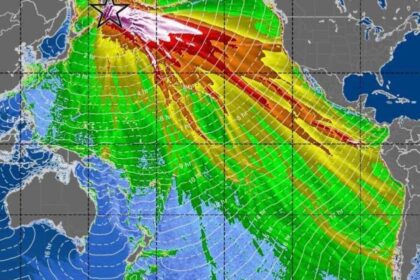China’s Dalian Advanced Light Source Achieves Major Laser Milestone
In a landmark achievement for global science and technology, Chinese researchers have successfully operated an electron beam at a repetition rate of one megahertz for the first time in Dalian, Liaoning province. This breakthrough marks a critical step forward for the Dalian Advanced Light Source (DALS) project, a next-generation extreme ultraviolet (EUV) free-electron laser (FEL) facility. The accomplishment not only cements China’s position at the forefront of advanced light source development but also opens new horizons for research in physics, chemistry, biology, and materials science.
- China’s Dalian Advanced Light Source Achieves Major Laser Milestone
- What Is the Dalian Advanced Light Source and Why Does It Matter?
- How Was the Breakthrough Achieved?
- Scientific and Technological Impact: Why FELs Are Game-Changers
- Comparing DALS to Global Light Source Facilities
- Broader Implications for Science, Industry, and Society
- Challenges and the Road Ahead
- In Summary
What Is the Dalian Advanced Light Source and Why Does It Matter?
The Dalian Advanced Light Source is envisioned as a state-of-the-art scientific facility designed to generate extremely bright, coherent beams of EUV light using free-electron laser technology. Unlike conventional lasers, FELs use high-speed electron beams traveling through magnetic structures (called undulators) to produce light at wavelengths unattainable by traditional methods. This makes FELs uniquely suited for probing the microscopic world at atomic and molecular scales, with applications ranging from fundamental physics to advanced manufacturing and life sciences.
The DALS project is led by academician Yang Xueming and researcher Zhang Weiqing from the Dalian Institute of Chemical Physics (DICP) of the Chinese Academy of Sciences. Their team’s recent success in achieving stable, high-repetition-rate electron beams addresses one of the most formidable technical challenges in FEL construction. As the first FEL user facility in China and the only one globally operating exclusively in the EUV region, DALS is poised to become a cornerstone of scientific discovery and technological innovation.
Understanding Free-Electron Lasers
Free-electron lasers are often called the “fourth-generation” of advanced light sources. Unlike traditional lasers that rely on specific materials to produce light, FELs use streams of electrons accelerated to near-light speeds. As these electrons pass through undulators, they emit light that can be tuned across a wide range of wavelengths, from infrared to X-rays. This flexibility, combined with the ability to generate ultra-short pulses and extremely high brightness, allows FELs to capture ultrafast processes and resolve structures at the atomic level.
The Dalian Coherent Light Source (DCLS), a precursor to DALS, has already demonstrated the power of FELs by delivering optical beams in the 50-150 nm range with pulse durations as short as 100 femtoseconds (one quadrillionth of a second). Such capabilities enable scientists to observe electronic dynamics, molecular evolution, and material phase transitions in real time.
How Was the Breakthrough Achieved?
The recent milestone in Dalian was the result of years of collaborative effort and technological innovation. Since the project’s launch in 2020, the DICP and the Institute of Advanced Light Source Facilities in Shenzhen have worked together to develop a suite of core technologies essential for FEL operation. These include:
- A photocathode electron gun capable of generating high-quality electron beams
- Ultrafast laser systems for precise timing and control
- Solid-state radio-frequency power sources for stable acceleration
- Superconducting accelerator modules that enable continuous-wave operation
- Cryogenic helium refrigeration systems to maintain superconductivity
Generating electron beams at a repetition rate of one megahertz (one million cycles per second) is particularly challenging due to the need for both stability and quality. Achieving this feat demonstrates that the Dalian team has mastered the core enabling technologies required for next-generation FELs.
According to the research team, this success “lays a strong foundation for the project’s future construction” and represents a significant step forward in China’s broader effort to advance cutting-edge FEL facilities.
Scientific and Technological Impact: Why FELs Are Game-Changers
Free-electron lasers like DALS are revolutionizing scientific research by providing tools that were previously unimaginable. Their ability to generate coherent, tunable, and ultra-bright light in the EUV and X-ray regions allows scientists to:
- Probe the structure and dynamics of molecules and materials at atomic resolution
- Study ultrafast chemical reactions and biological processes in real time
- Develop advanced imaging techniques for medicine and materials science
- Support next-generation semiconductor manufacturing through EUV lithography
For example, the Dalian Coherent Light Source has enabled experiments in molecular photochemistry, aerosol mass spectrometry, and biological mass spectrometry. By introducing EUV laser beams into high-resolution mass spectrometry, researchers can efficiently dissociate complex biomolecules and obtain detailed structural information, advancing fields like proteomics and drug discovery.
China’s Strategic Vision for FEL Technology
China has identified FEL technology as a strategic priority for scientific and technological development. According to national development strategies, the country aims to make breakthroughs in long-wave FELs, X-ray FELs, and FEL-based EUV lithography light sources by 2035. These efforts are supported by increased investment in fundamental research, multi-party cooperation, and a focus on independent innovation.
The Dalian Institute of Chemical Physics, in particular, has a long history of pioneering research in catalysis, chemical engineering, and laser technology. Its leadership in the DALS project reflects China’s commitment to building world-class scientific infrastructure and fostering a new generation of scientific talent.
Comparing DALS to Global Light Source Facilities
Globally, several advanced light source facilities have transformed research in structural biology, materials science, and chemistry. Notable examples include the Swiss Light Source and SwissFEL in Switzerland, which have enabled high-throughput, high-resolution studies of macromolecules. The DALS project, however, occupies a unique position as an EUV FEL facility with continuous-wave operation at high repetition rates, offering capabilities that complement and extend those of existing synchrotron and FEL sources.
Most FEL facilities worldwide operate in the X-ray or soft X-ray regions, while DALS is designed to deliver coherent EUV light with exceptional temporal and spatial resolution. This makes it especially valuable for studying processes that involve valence electrons and for applications in advanced manufacturing, such as EUV lithography for semiconductor fabrication.
Broader Implications for Science, Industry, and Society
The successful development of DALS has far-reaching implications beyond basic research. In the realm of clean energy and environmental technology, the Dalian Institute of Chemical Physics has already demonstrated leadership through innovations in catalysis, chemical engineering, and energy storage. The advanced capabilities of DALS will further empower research in these areas, enabling the design of more efficient catalysts, the study of energy conversion processes, and the development of new materials for sustainable technologies.
In industry, FEL-based EUV light sources are critical for the next generation of semiconductor manufacturing. As chipmakers push the limits of miniaturization, EUV lithography has become essential for producing smaller, faster, and more energy-efficient integrated circuits. By mastering the core technologies behind FELs, China is positioning itself as a leader in the global semiconductor supply chain.
Training the Next Generation of Scientists and Engineers
Large-scale scientific facilities like DALS also serve as training grounds for young scientists and engineers. By participating in cutting-edge research and technology development, students and early-career researchers gain invaluable experience that prepares them for leadership roles in academia, industry, and government. This talent pipeline is essential for sustaining innovation and ensuring that China remains at the forefront of scientific discovery.
Challenges and the Road Ahead
Despite the recent breakthrough, significant challenges remain in the construction and operation of the Dalian Advanced Light Source. Maintaining stable, high-quality electron beams at megahertz repetition rates requires ongoing advances in accelerator technology, cryogenics, and control systems. Furthermore, integrating the facility into the broader scientific community and ensuring open access for researchers will be key to maximizing its impact.
China’s national strategy for FEL technology emphasizes the importance of sustained investment, multi-institutional collaboration, and the translation of scientific achievements into practical applications. As DALS moves from prototype to full-scale operation, it will serve as a model for future large-scale scientific projects in China and around the world.
In Summary
- Chinese scientists in Dalian have achieved a world-first by stably operating an electron beam at a repetition rate of one megahertz, a key milestone for the Dalian Advanced Light Source (DALS) project.
- DALS is a next-generation extreme ultraviolet free-electron laser facility, designed to provide ultra-bright, coherent light for cutting-edge research in physics, chemistry, biology, and materials science.
- The breakthrough was made possible by advances in photocathode electron guns, ultrafast lasers, superconducting accelerators, and cryogenic systems, developed through collaboration between the Dalian Institute of Chemical Physics and partners in Shenzhen.
- Free-electron lasers like DALS are revolutionizing scientific research and industrial applications, including semiconductor manufacturing and clean energy technology.
- China’s strategic focus on FEL technology aims to secure leadership in advanced light sources, foster innovation, and train the next generation of scientific talent.












